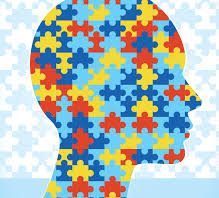It has been well and widely substantiated that vaccines do not cause autism. DO NOT. In any way, shape, or form. Yet, there has been a drastic increase in the prevalence of autism as shown by multiple reputable health-tracking and census organizations. So, since vaccines are not (NOT!) a viable scapegoat for the blame, where is all this autism coming from?
So far, there have been studies examining international changes in the diagnostic criteria (they have been widened to include more symptoms and conditions), reporting practices, and provider awareness all over the globe. These studies have shown that the changes in diagnosis, reporting, and awareness account for approximately 60% of the increase in autism cases worldwide. This is a significant number; it shows that many of the individuals diagnosed with autism in recent years, have not sustained the condition because of things like vaccines, GMO (genetically modified organisms) presence in food, or increases in screen time as technology advances. They were just “flying under the radar” in the past, and now, thanks to the inclusive nature of new guidelines are more easily identified so they can get the help they need to be successful.
So where can the other 40% of the increases in autism be attributed? Many studies have shown that certain environmental factors have a moderate to strong association with autism including prenatal viral infection, prenatal stress, the ages of the parents, and toxin (ie: drugs) exposure pre- or postnatally. These factors often lead to dysregulation of the immune system.
The dysregulation of the immune system, even while in utero, can lead to changes in the biochemical pathways within the cell and the developmental challenges individuals with autism often face. The chemicals that increase inflammation also control parts of different pathways called the p38 MAPK and ERK pathways (named after the central molecule). The p38 MAPK and ERK pathways control many functions in cells, and thus, they body as a whole. This means that when the immune system isn’t working as a baby develops, there will also be changes to major pathways such as MAPK and ERK which can lead to the cognitive challenges of autism by changing the response in neurons to stimuli. The changes in how neurons react to their stimuli (neurotransmitters) changes the shape of the neuron (branching) and the number of areas where it can “talk” to other neurons (synapses).
So, while much of the increase in prevalence of autism can be attributed to awareness and increased reporting and diagnosis, there are environmental factors that may be associated with an increased risk of an individual developing autism. However, these risk factors are wide-reaching and difficult to control (except perhaps drug use), thus making it clear that more research needs to be done before it can be definitely announced what “causes” autism.
If not vaccines: what is causing so much more autism?

Nicely written and nicely done!!!
I have enjoyed the blog.